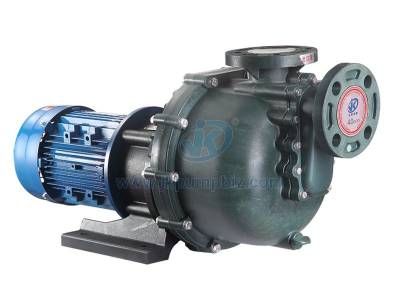How Does a Self-Priming Pump Work?
Self-Priming Pumps are the workhorse of the pump industry. From important environmental sustainability projects to huge commercial operations, self-priming pumps are very important to many people in many different environments. If for some reason you're not familiar with self-priming pumps and how they work, don't worry. Before we discuss the best way to utilize a self-priming pump, we will first explain exactly what self-priming pumps are and how they work.

Self-Priming Pumps
A self-priming pump is a form of centrifugal pump, another type of positive displacement pump. Centrifugal pumps use centrifugal force to create a pressure difference in the liquid. This pressure difference allows the liquid to move from an area of higher pressure to an area of lower pressure, thus allowing the centrifugal pump to pump the liquid from one area to another. (Non-self-priming) centrifugal pumps require their casing to be completely submerged in the liquid in order to be able to operate properly. Since air is more difficult to pump than liquid, the presence of air in a Centrifugal Pump makes it airborne. At the same time, self-priming pumps are able to operate in an air-water mixture, converting this mixture into a fluid that can be pumped.
Self-priming pumps have this ability thanks to their built-in water reservoirs. The reservoir allows the self-priming pump to circulate water through the pump at will, removing the air that prevents the pump from operating when necessary. For this reason, the self-priming pump has the rare feature of being able to turn a previously unpumpable mixture of air and water into a fluid that it can comfortably control.
The ability of self-priming pumps to work in mixtures of air and water makes them more versatile than their non-self-priming counterparts, which allows them to work in a wider range of environments. In industrial chemical processes, many of the chemicals involved are volatile, so the ability to self-priming is critical when air seeps into a centrifugal pump. Similarly, the amount of air entrained liquid involved in the paper manufacturing process makes self-priming pumps a common occurrence in paper mills around the world. In addition to being suitable for these industries, self-priming pumps are also popular in the wastewater treatment sector.
The company also offers Magnetic Drive Pumps, please feel free to contact us if you need









